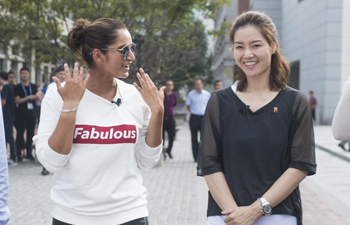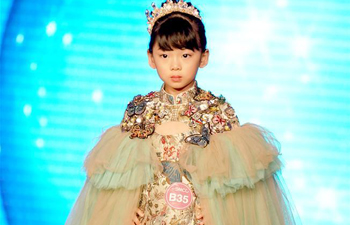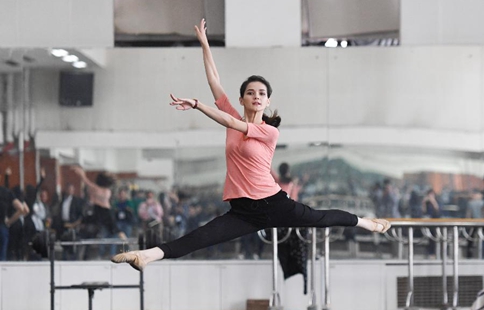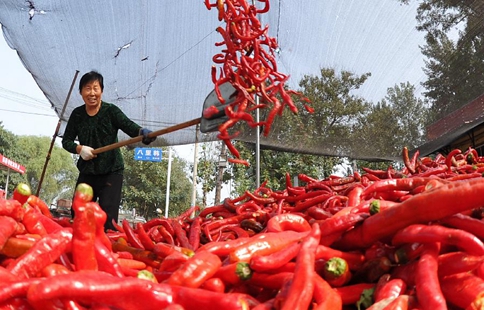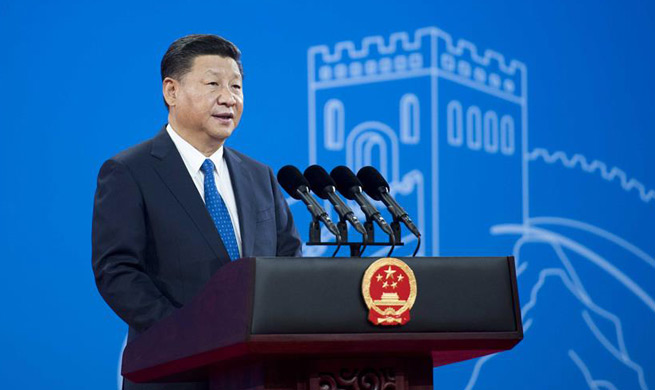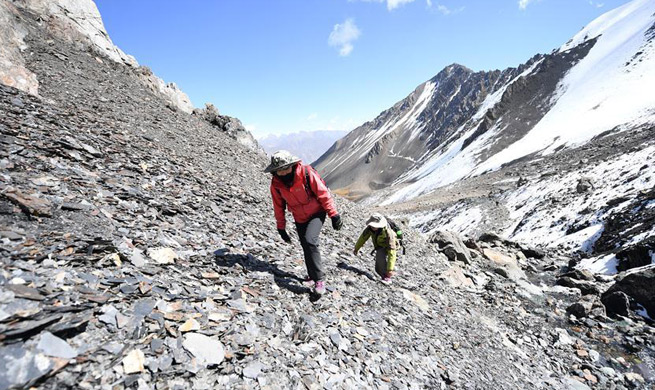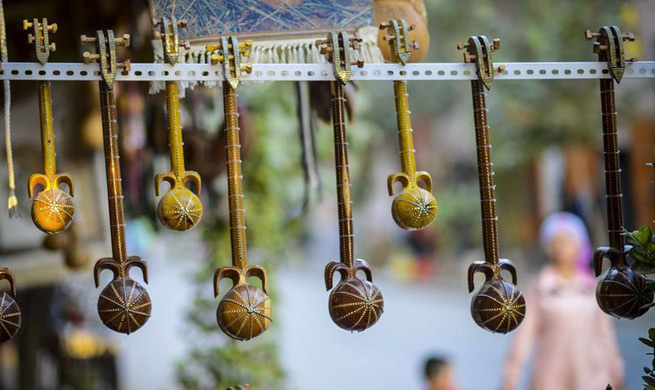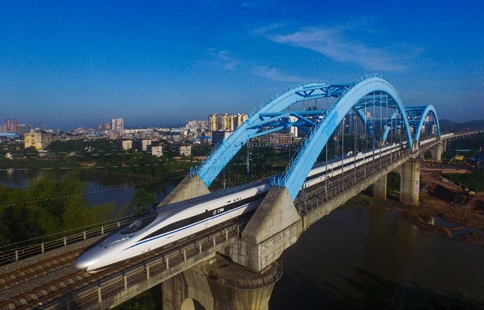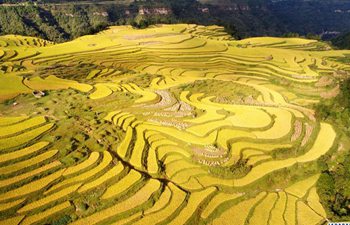by Yang Shilong, Xu Xingtang
NEW YORK, Sept. 25 (Xinhua) -- Tie-dye is a kind of traditional Chinese handicraft that requires a craftsman's lifetime to master complicated control of the color, using a spoon or gourd ladle to pour the dyeing liquor onto the cloth slowly.
Now, you can get what you want in tie-dyeing, by a simple touch, with the semi-automatic tie-dye machine, invented by Shan Siqi, a graduate from Tianjin Academy of Fine Arts in Tianjin, a port city in north China, and her team.
The device, armed with the super calculate power of Intel chip, boasts intelligent color modulation dyeing at a constant temperature and with recycled liquids.
"It's my dream to revive this traditional craftsmanship with state-of-the-art technology. I feel so great that I've made it," Shan told Xinhua on the sidelines of the inauguration ceremony of the China-U.S. Young Maker Summit and China-U.S. Youth Innovation Center.
The ceremony was held Monday at the Kimmel Center of New York University (NYU), in downtown Manhattan, New York City.
MOST HIGHLIGHTED COMPONENTS
Shan was among the six teams of makers that greeted visiting Chinese Vice Premier Liu Yandong during the event. Liu is to co-chair the first China-U.S social and people-to-people dialogue on Thursday in Washington D.C.
The dialogue is one of the four high-level dialogues established during the Mar-a-Lago meeting between Chinese President Xi Jinping and his U.S. counterpart, Donald Trump, in the southeastern U.S. state of Florida in April.
The two leaders agreed to establish high-level dialogue mechanisms, including the diplomatic and security dialogue, the comprehensive economic dialogue, the law enforcement and cybersecurity dialogue, and the social and people-to-people dialogue.
Innovation cooperation is "one of the most dynamic" and "the most highlighted components" of people-to-people exchange between China and the United States, Liu said.
"I hope young people in both China and the United States would be the main driver of innovation development and the vanguard of bilateral cultural exchange, injecting positive energy into the two countries' ties," Liu said.
NYU President Andrew Hamilton echoed Liu's words.
"We have American students launching startups in China, and we have Chinese startups in the U.S. What can be better than that? That's what comes from collaboration," Hamilton said.
Peter Cleveland, vice president of Intel Corporation, told Xinhua that currently there are some challenges in the economic area between the United States and China, but that is why these events are held.
"It builds confidence, it builds momentum between Chinese companies and bright young people in China and companies like Intel here," he said.
Pang Hongbo, assistant professor at the Department of Pharmaceutics, University of Minnesota, said that his team's novel targeting technologies for cancer treatment and detection is also a right example for innovative cooperation between U.S. and China researchers.
"Our project was sponsored by a Chinese investment company, and we've set up a new company for taking the technology to markets in both China and the United States," he told Xinhua.
YAO & TEEN BASKETBALL ENVOYS
It was a pleasant surprise for all the basketball players during a friendship game between Chinese and U.S. middle school boys, when Vice Premier Liu, accompanied by former NBA star Yao Ming, showed up at the basketball court of Nike's headquarter in New York City on Monday afternoon.
"Basketball is a favorite sport for both Chinese and American people," Liu said, "It's also an important vehicle for people-to-people exchange."
"Basketball can help us keep a strong body, more importantly, it can also foster a sense of teamwork and cooperation. This sports culture illustrated by basketball makes all of us a better person," she added.
Liu expressed the hope that, through such sports exchange, young people from China and the United States can not only improve their basketball skills, but can also enhance friendship, deepen mutual understanding and contribute to the two countries' people-to-people exchange and bilateral relations as a whole.
She encouraged the students from the New York Renaissance and the High School Affiliated to Shanghai Jiaotong University to regularly do exercises to build up their bodies at a young age.
"Health is the foundation of our life, of our career, of our happiness," said Liu, "When I was in middle school, I ran 3,000 or 5,000 meters a day. And when I was in Tsinghua University, I swam in summer, skated in winter, (and) I even completed in pentathlon."
"We believe in power of sports to connect us," said Sean O'Hollaren, Nike's senior vice president. "What basketball can do is to bring us together, two great teams from across the world, and also develop international understanding and foster people-to-people exchange."
Yao, now president of the Chinese Basketball Association, chuckled when referring to the Chinese team: "I was a student of Shanghai Nanyang Model Private High School, your arch-rival, so I really have a mixed feeling about your team."
"However, I have to say I don't want to see you defeated by your American friends, and I wish the best team to win the game," Yao said in Mandarin Chinese.
Interestingly, the interpreter probably did not listen clearly to what Yao said and he translated Yao's last sentence as "I hope you win the game. That will be the best for us."
"I wish the best team to win the game," Yao said in perfect American English, patting the interpreter on shoulder.
"There will be no losers in this game," Jey Saywat, a basketball coach, said, "They are all wonders. They are building bridges, and we are building bridges of friendship too."





